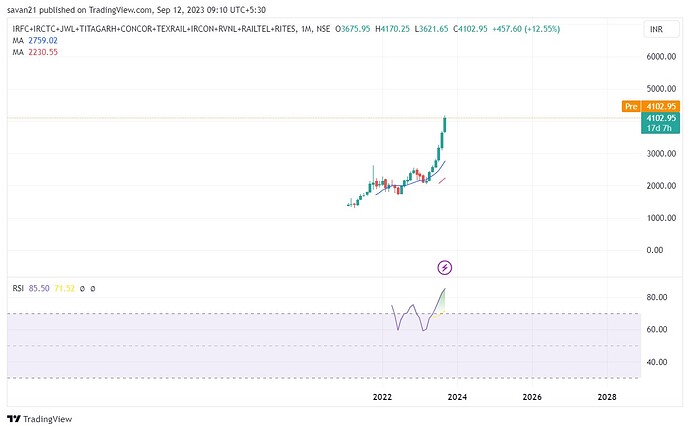The Stock Market is a game of probability wherein you can’t always win but you can place your bets on a higher probability strategy to come out in profits and avoid a low probability setup. This is all about risk and reward and investing your money at a time when the reward is higher as compared to the risk. While no one can exactly predict, as I already said, it is a game of probability.
One such probability is setting up in Railway stocks which have risen exponentially over the last three months. The announcement of the Railway corridor connecting India and Europe could be a culminating move at least in the short term for the sector. While this does not mean one should sell all of their railway stocks, a caution is surely warranted.
Composition:
Since the exchange doesn’t have its own railway index (as of yet), I have been following my own basket of railway and related stocks to form the railway index to understand the performance of the sector as a whole. While not all stocks are into similar business, they have correlation to the railway theme and hence have been clubbed together to take a sectoral view.
Monthly Time Frame:
The Monthly chart shows the exponential rise in the basket in the last five months wherein the monthly RSI has reached and sustaining above the 80 levels and while overbought can remain overbought, it warrants a caution with profit booking on good news of the railway corridor.
Weekly Time Frame:
On a similar manner, the weekly time frame the RSI has heated upto 90 levels whereas the basket as a whole is 20% away from Weekly 10 MA and 50% away from weekly 30 MA. This indicates clear overheating in the basket and while the stocks can still move from here, as an investor or a trader, it warrants to have a cautionary view as it might not be possible to exit from stocks within a reasonable margin of safety.
A Contra perspective:
The railway stocks have been surging due to a large order book which far exceeds their current sales and in certain shares even their market capitalization. However, what remains to be seen is that whether the companies are able to execute the orders at a similar margin which can contribute to their bottom line.

